
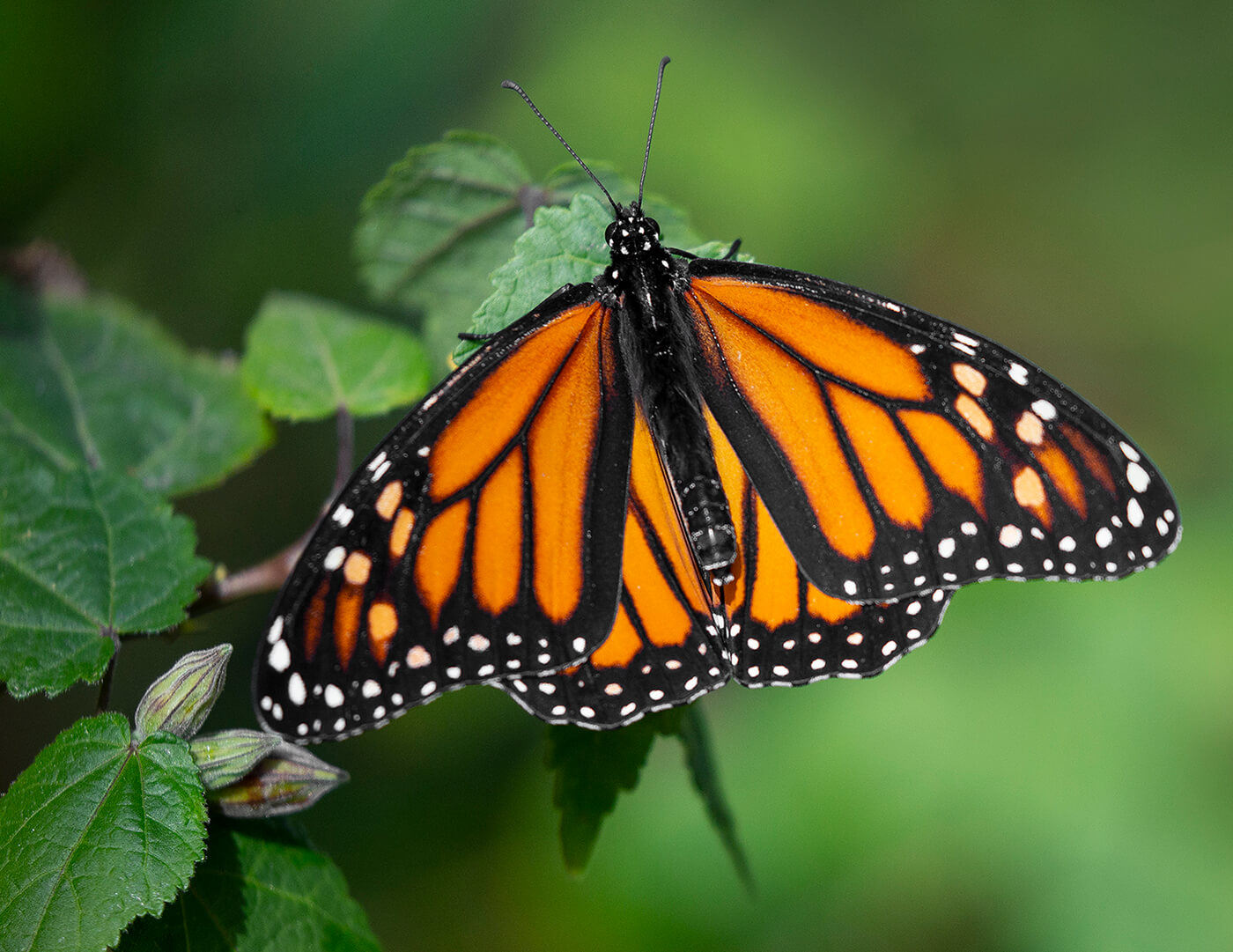
 Click here to ask your government representatives to support the MONARCH Act to restore critical habitat in Monarch butterflies’ migratory range.
Click here to ask your government representatives to support the MONARCH Act to restore critical habitat in Monarch butterflies’ migratory range.Both populations of North American monarchs—eastern monarchs that overwinter in central Mexico, and western monarchs that overwinter primarily in California—are rapidly declining and in need of our help. But western monarchs are in an especially precarious state. Their numbers have dropped by more than 99 percent in just 40 years. Now, these insects are hovering at the edge of extinction. A devastating protozoan parasite, Ophryocystis elektroscirrha (OE), is one of their major threats. Monarch caterpillars feed only on milkweed; when infected adults land on a milkweed plant to lay eggs, they also deposit OE spores onto its leaves, spreading the parasite to their offspring. Luckily, monarchs’ annual migration breaks the host-parasite cycle, as does the dormancy in native milkweed each fall and early winter. But not all milkweed is created equal. Non-native tropical milkweed grows throughout the year in warm parts of the United States, such as Southern California and the Gulf states, instead of dying back each fall. This disrupts natural migration patterns and allows OE to persist and build up on the plant leaves. On the other hand, native milkweed that grows naturally in various regions throughout the United States is key to monarch survival: when it begins to die back each autumn, it acts as one of several important cues for monarchs to begin migration to their winter refuges, interrupting the OE cycle. 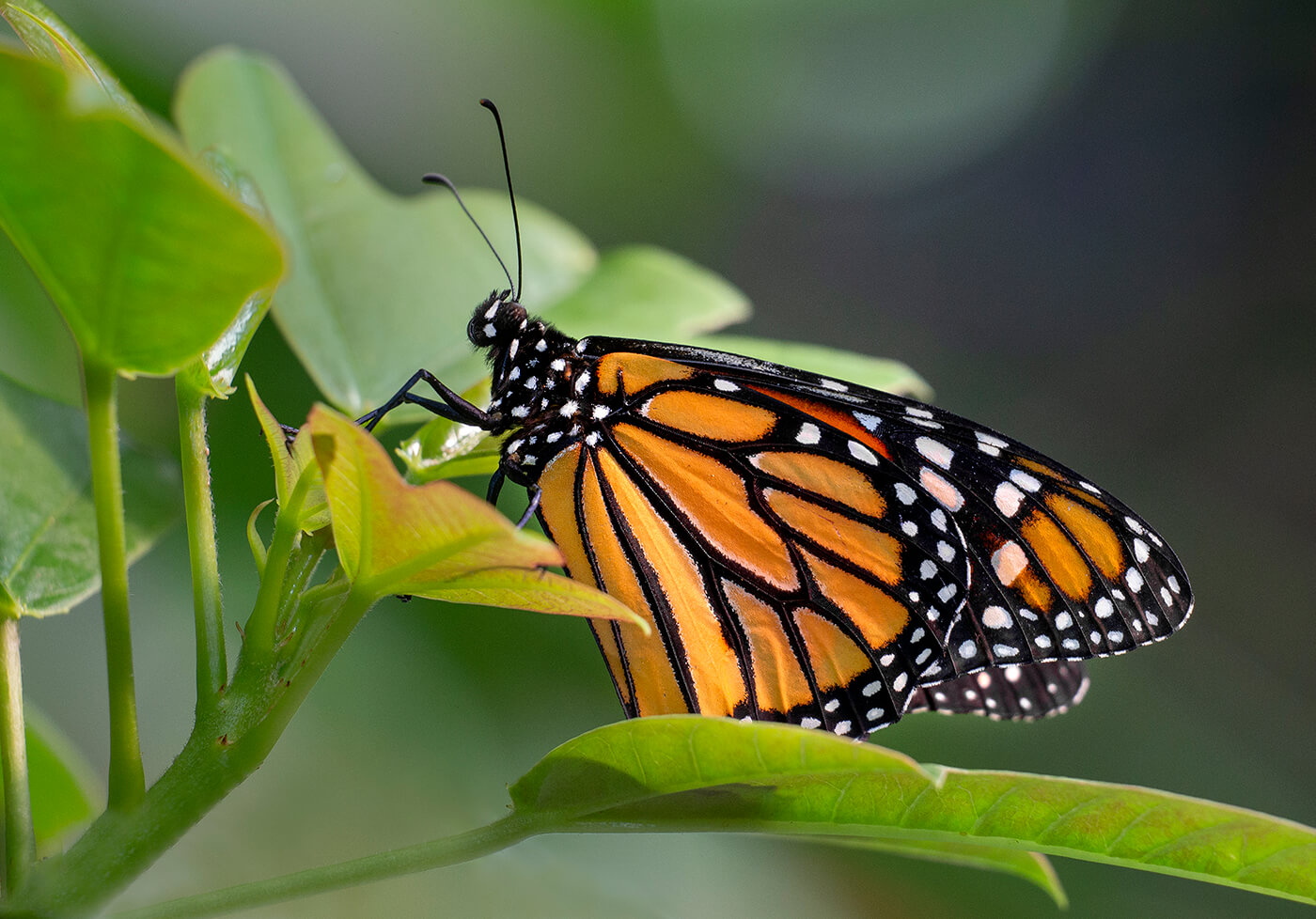 OE infections in winter-breeding monarchs on tropical milkweed can be up to five times higher than in migratory monarchs. In California, the prevalence of OE in sites with resident, non-migratory monarchs can be up to nine times higher. “In general, native plants are always the best choice for local wildlife, and for monarchs, native milkweed is critical,” says Paige Howorth, McKinney Family director of invertebrate care and conservation for San Diego Zoo Wildlife Alliance. “Everyone can help.” Unfortunately, tropical milkweed is the most available type in nurseries and garden centers. This results in many well-intentioned monarch enthusiasts planting milkweed that harms, not helps, the species.
OE infections in winter-breeding monarchs on tropical milkweed can be up to five times higher than in migratory monarchs. In California, the prevalence of OE in sites with resident, non-migratory monarchs can be up to nine times higher. “In general, native plants are always the best choice for local wildlife, and for monarchs, native milkweed is critical,” says Paige Howorth, McKinney Family director of invertebrate care and conservation for San Diego Zoo Wildlife Alliance. “Everyone can help.” Unfortunately, tropical milkweed is the most available type in nurseries and garden centers. This results in many well-intentioned monarch enthusiasts planting milkweed that harms, not helps, the species. 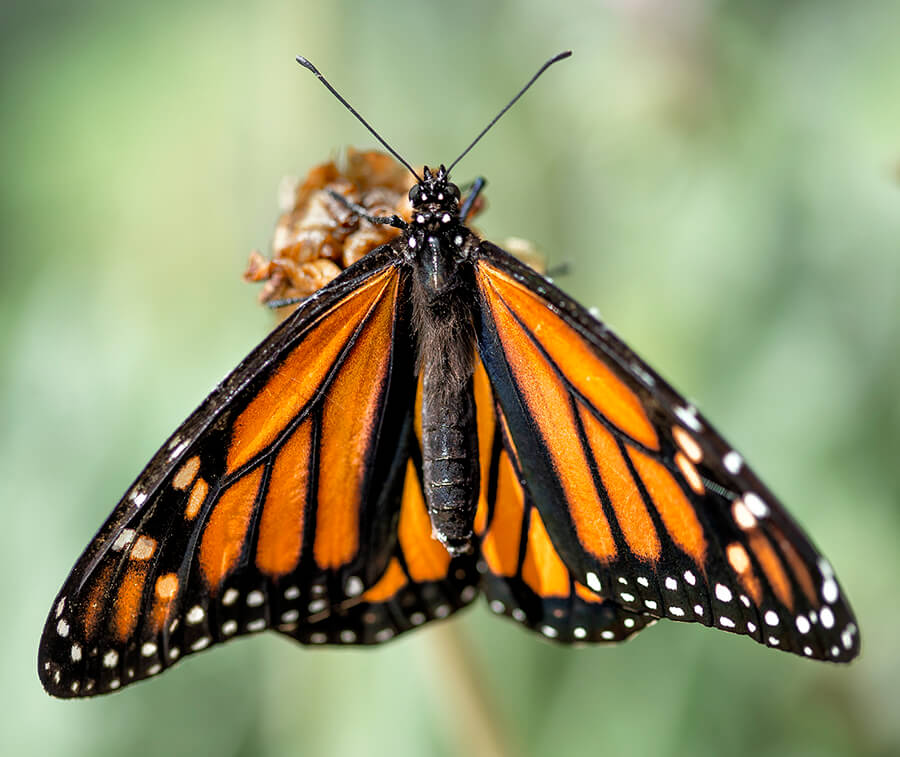 By providing monarchs with native milkweed to feast on, you fuel their migration, keep butterflies healthy, and bolster fragile populations. Look for native varieties at your local plant nursery, and check that they are pesticide free. If the nursery doesn’t have any native milkweed available, be sure to ask for it. The best way to drive supply of native milkweed is to make sure that businesses know there is a market for it. Native milkweed species vary by region, so some homework must be done before you purchase and plant. To complicate things further, different varieties of milkweed thrive in different types of environments. “There are some lovely desert species that will not do well in coastal gardens,” says Lesley Randall, horticulture manager at the San Diego Zoo. “So, it’s important for a home gardener to research a bit to see what will do well in their situation.”
By providing monarchs with native milkweed to feast on, you fuel their migration, keep butterflies healthy, and bolster fragile populations. Look for native varieties at your local plant nursery, and check that they are pesticide free. If the nursery doesn’t have any native milkweed available, be sure to ask for it. The best way to drive supply of native milkweed is to make sure that businesses know there is a market for it. Native milkweed species vary by region, so some homework must be done before you purchase and plant. To complicate things further, different varieties of milkweed thrive in different types of environments. “There are some lovely desert species that will not do well in coastal gardens,” says Lesley Randall, horticulture manager at the San Diego Zoo. “So, it’s important for a home gardener to research a bit to see what will do well in their situation.” 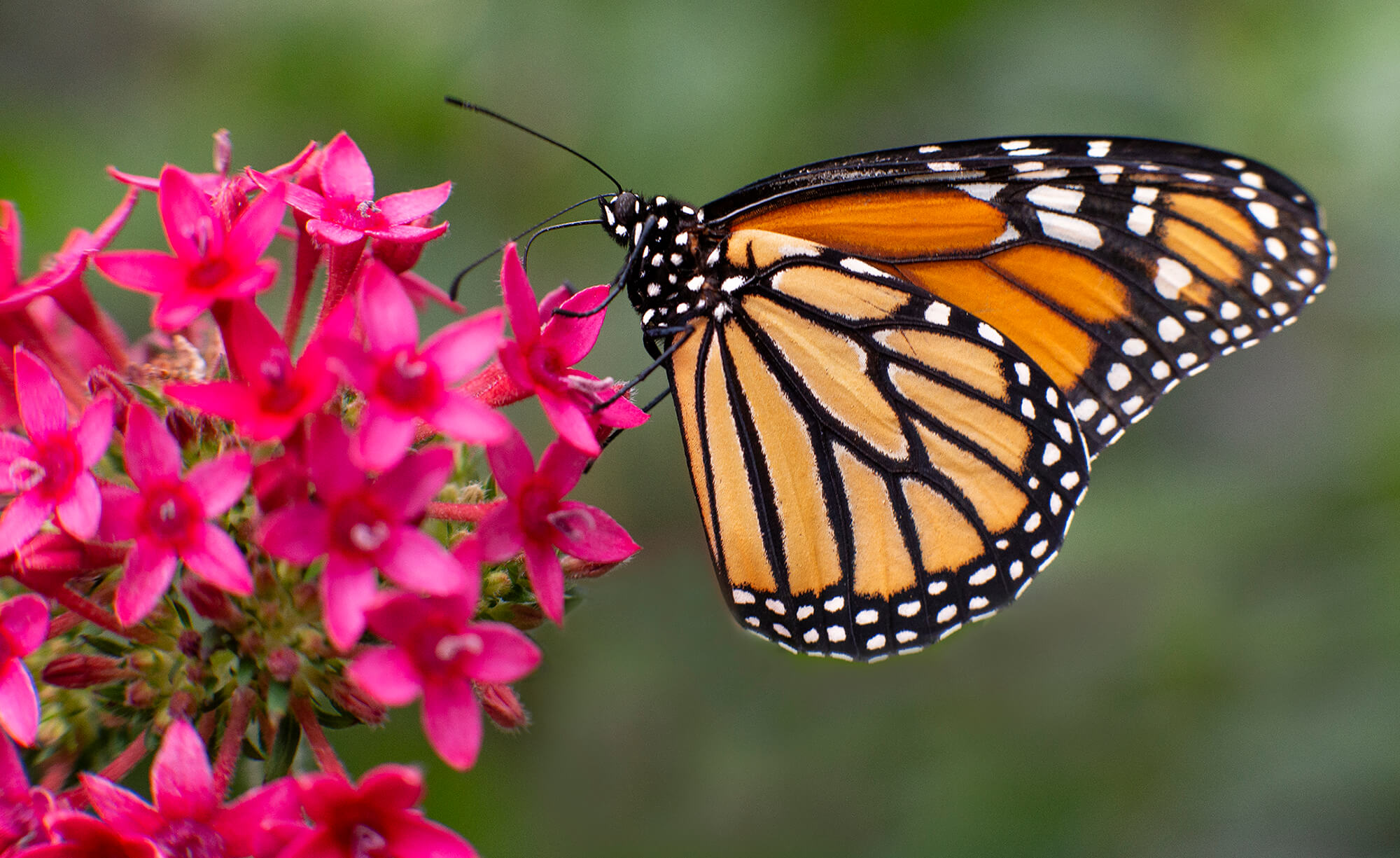
YOU GOT THE RIGHT STUFF
But how do you know which milkweed species are monarch-safe, and which will flourish in your own garden? For California residents, look for these native varieties: [caption id="attachment_139464" align="aligncenter" width="1400"]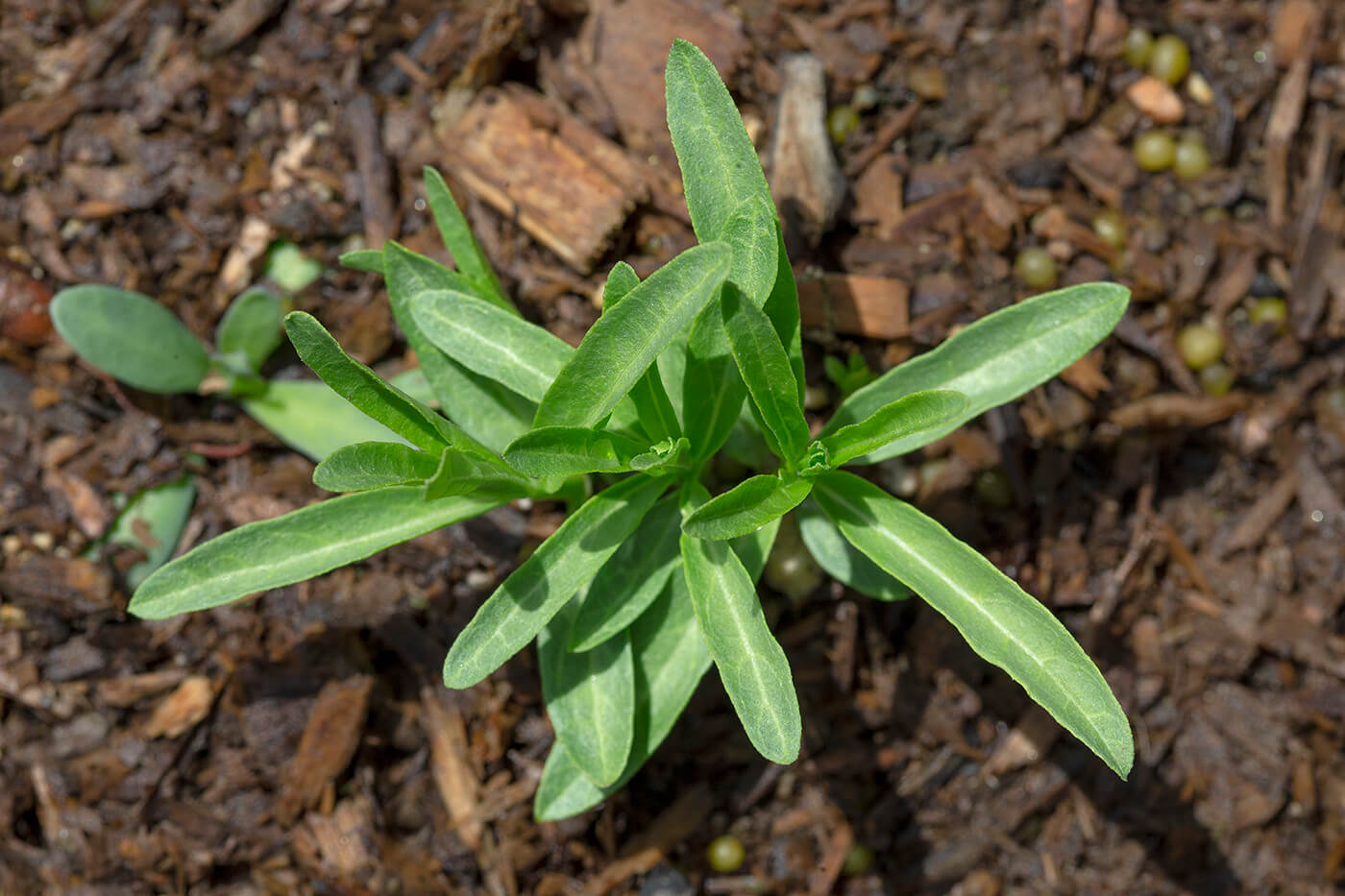 STRAIGHT AND NARROW
STRAIGHT AND NARROW
With long, skinny stems and pointed leaves, narrow-leaf milkweed Asclepias fascicularis blooms in bursts of lavender or lavender-tinted white flowers. Its smooth pods are filled with hairy seeds.
Thrives in:
Areas near the coast, or inland on the ocean-facing side of mountains. In San Diego County, it tends to grow naturally in areas that stay slightly moist, so it will require water in the growing season and well-drained soil.[/caption] [caption id="attachment_139465" align="aligncenter" width="1400"]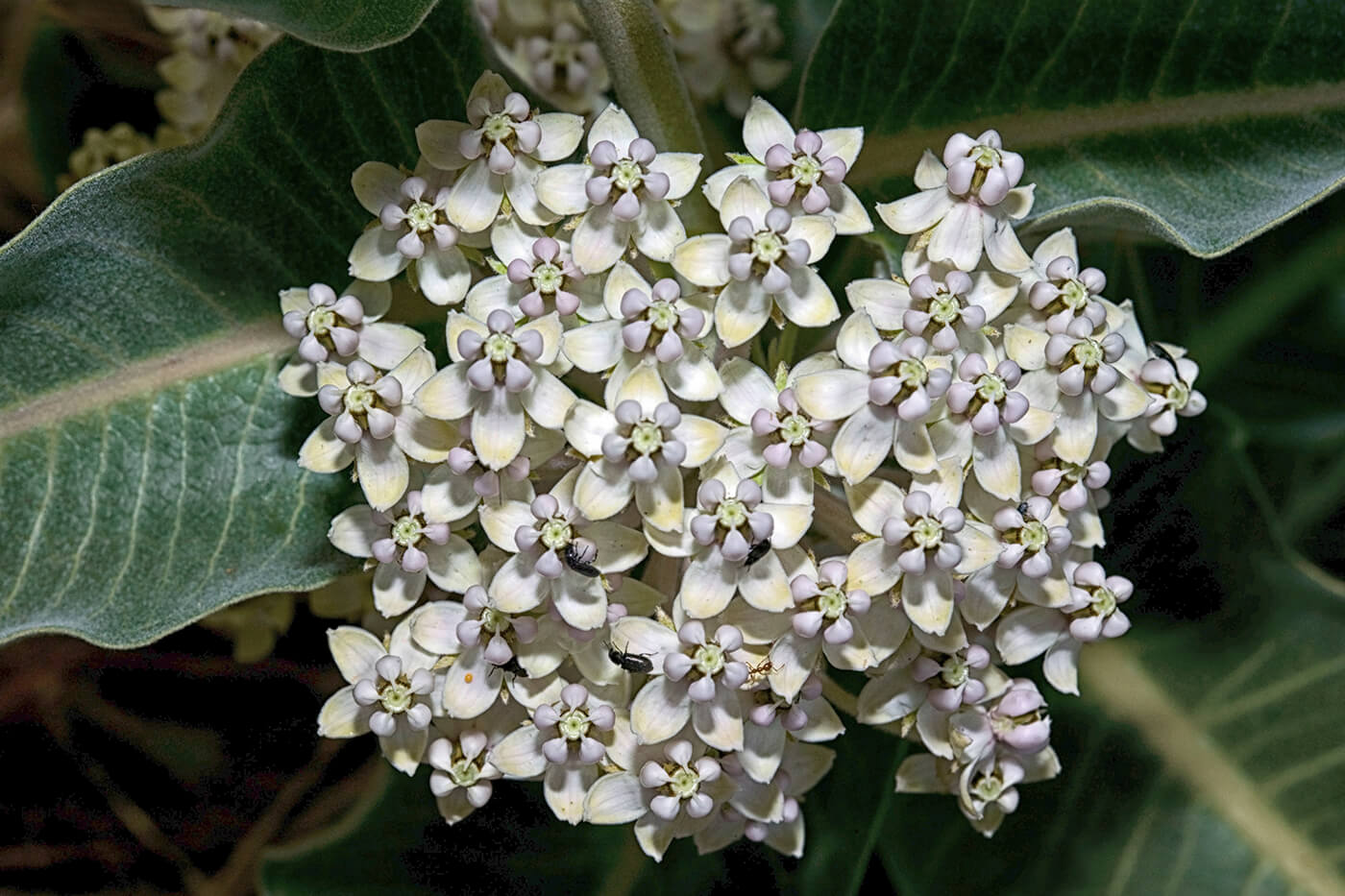 MAKING A FUZZ
MAKING A FUZZ
Asclepias eriocarpa (also known as woolypod milkweed) sports oval-shaped leaves and white flowers with a slightly pink hue. Thick white hairs cover the plant from top to bottom, and—true to its name—it produces a woolly fruit.
Thrives in:
A slightly drier environment, farther from the coast.
(Photo by: Michel Foret / Alamy Stock Photo)[/caption] [caption id="attachment_139466" align="aligncenter" width="1400"]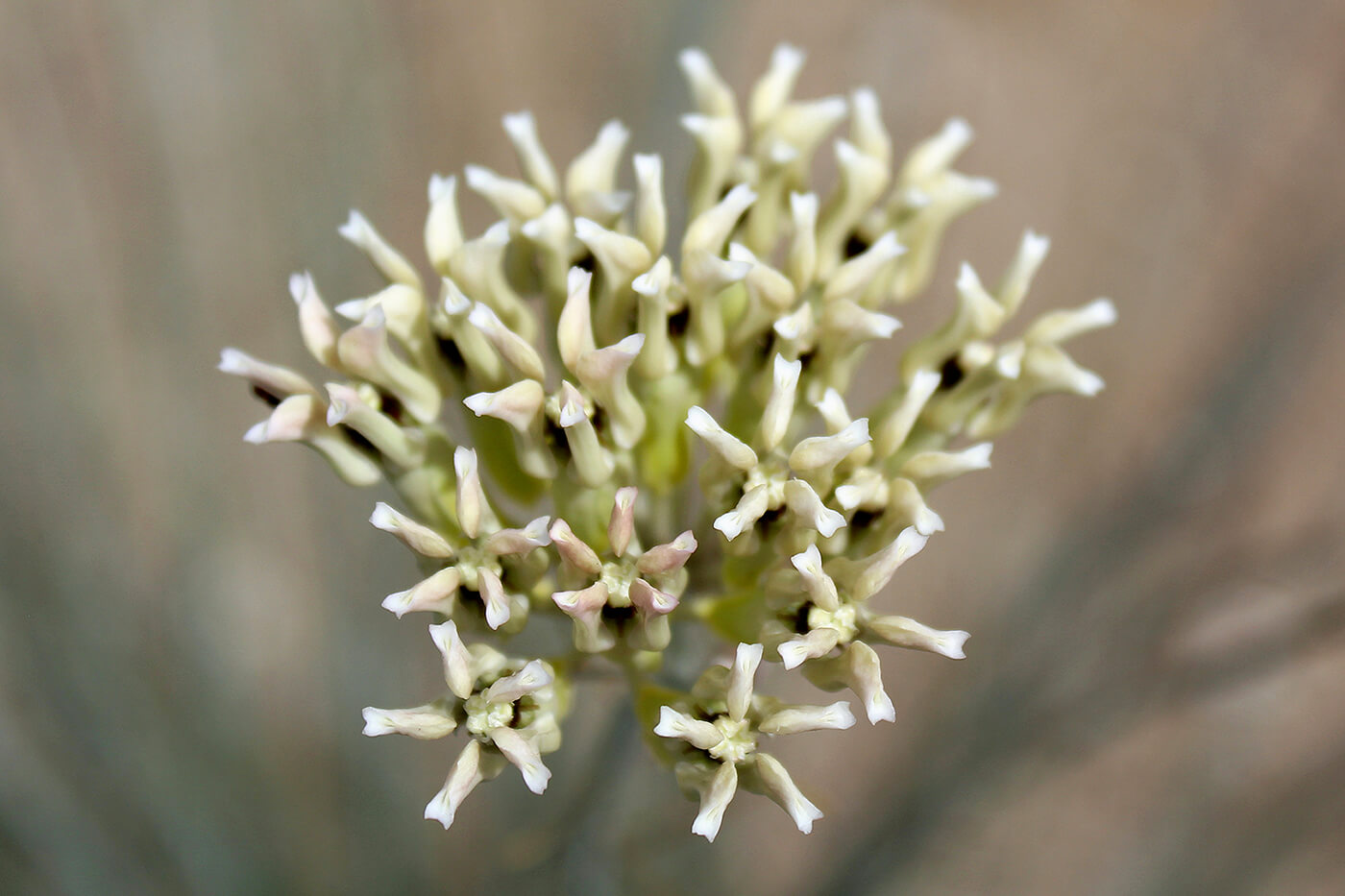 NO BONES ABOUT IT
NO BONES ABOUT IT
Skeleton milkweed Asclepias subulata loses its leaves earlier in the fall than other milkweed species. Afterward, it appears as a “naked” stalk crowned with a cluster of swooping white flowers that curl back to reveal columns tipped with tiny hooks. Its fruit is pouch-like, with flat, rounded seeds and long, sleek hairs.
Thrives in:
Deserts only.
(Photo by: Dominic Gentilcore PhD / Shutterstock.com)[/caption] [caption id="attachment_139467" align="aligncenter" width="1400"]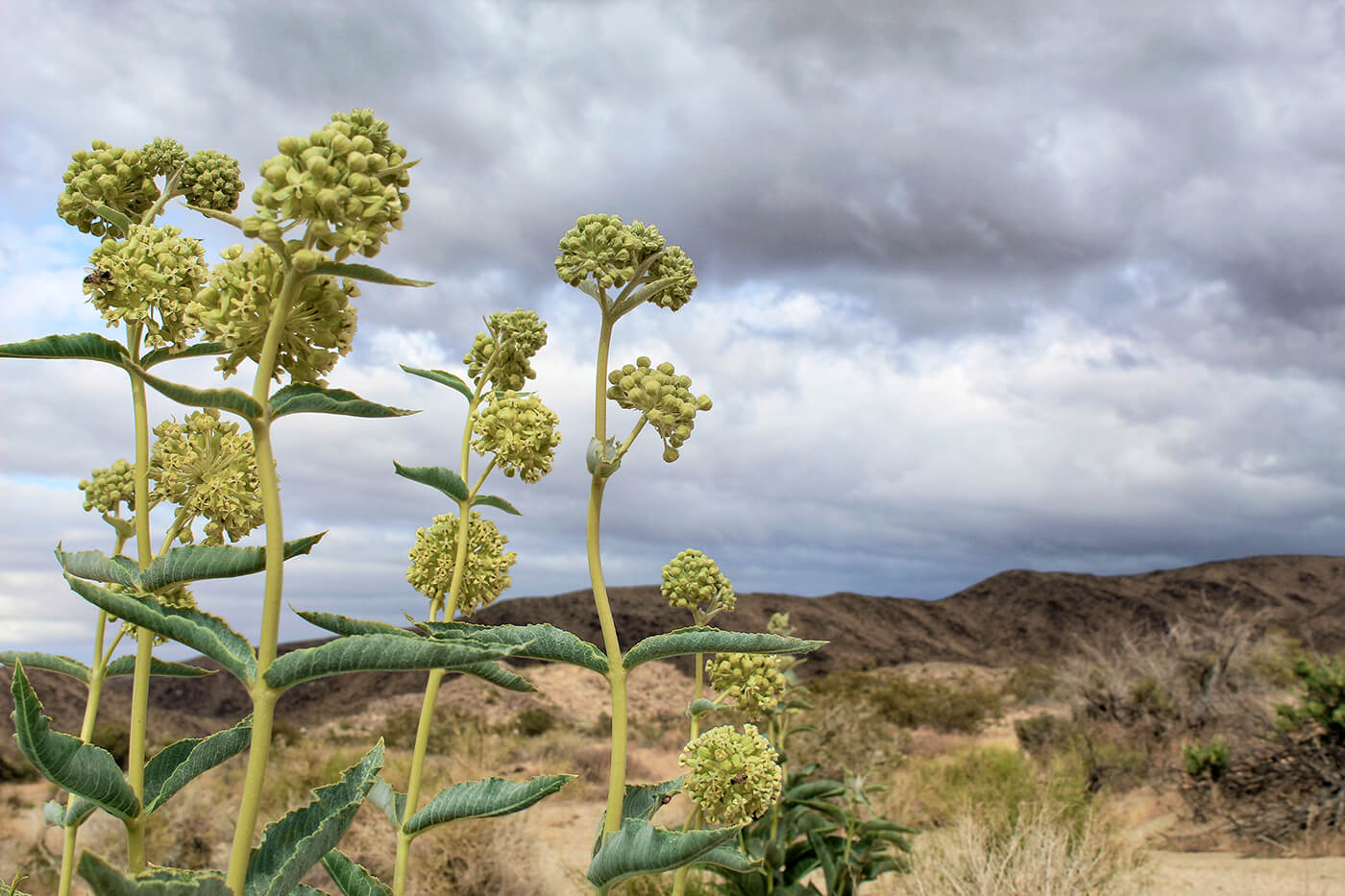 HIGH AND DRY
HIGH AND DRY
You guessed it—this California native, desert milkweed Asclepias erosa, is found only in the desert, or in desert-like conditions with sandy soil. Tall stems produce white or yellow flowers. Its leaves can range from mostly smooth to finely dusted with cream-colored fuzz.
Thrives in:
Warm, dry, and well-drained environments. In San Diego County, it is primarily found in the desert, but it is also found in the foothills at the end of the Central Valley.
(Photo by: Jared Quentin / iStock / Getty Images Plus)[/caption] 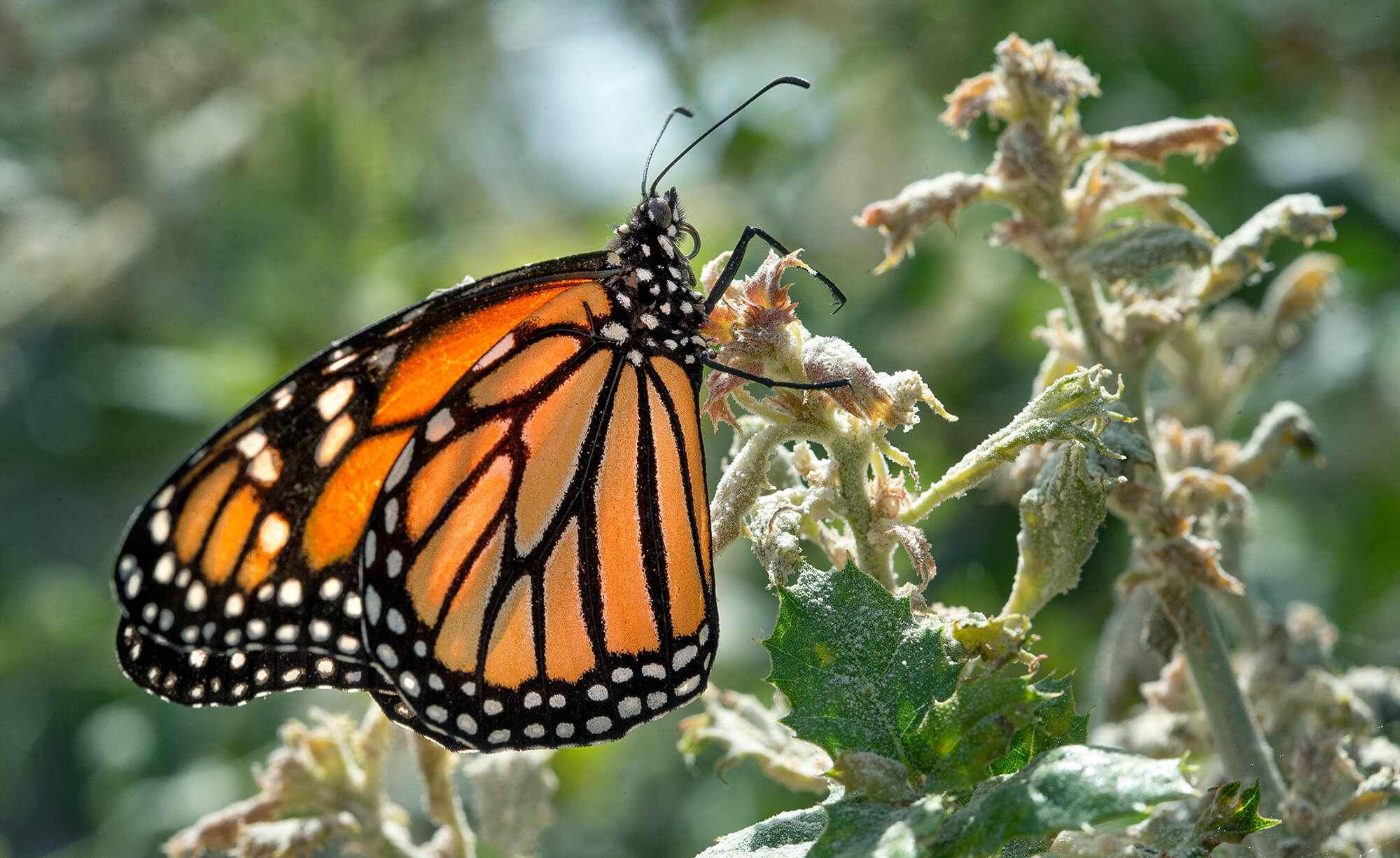
PROTECT MONARCHS WITH US
If you can’t find any native milkweed available for sale, butterfly-friendly native nectar plants are a good alternative. And even those without a garden can still join San Diego Zoo Wildlife Alliance in protecting monarch butterflies. Ask your government representatives to support the MONARCH Act to restore critical habitat in Monarch butterflies’ migratory range, at sdzwa.org/take-action.




